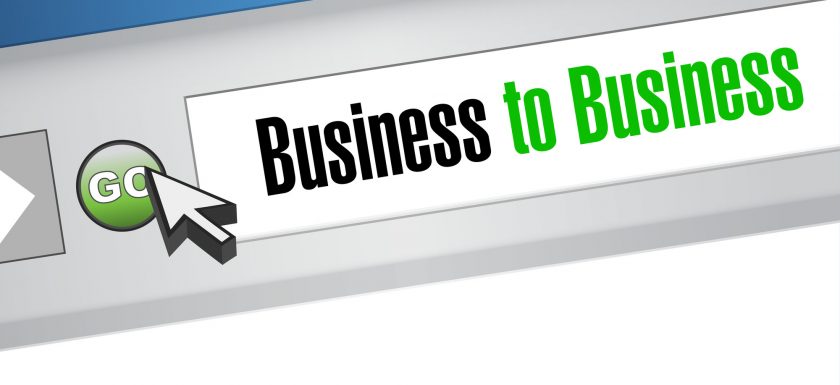53% of website visitors will exit if a mobile site takes over 3 seconds to load. And with 62% of B2B marketers optimizing their websites for mobile, good web design is critical for attracting buyers and making sales.
B2B, or business to business, marketing refers to selling services and products to businesses. As opposed selling directly to customers. The vast majority of businesses fall into this categories.
Creating a website that appeals to other businesses is often tricky and requires careful planning.
Luckily we’ve put together a handy guide for B2B website design to help your business thrive.
Differences Between B2B Website Design and B2C Website Design
Though fundamentals of good website design don’t deviate very much, there are some key disparities between B2B and B2C (business to customer) web designs.
A B2B website will serve a completely different purpose from B2C websites. Though both websites want to attract customers, usually, B2B sites are about fostering long-term relationships with clients while B2C sites are about getting a quick sale or impulse buy.
B2B websites need to create a closer bond with their buyers, so it’s much more important provide contact information, brand aggressively, and add resources to your website.
Remember that your site design must be customized for the needs of your specific audience. You should probably go with a designer and not use a template as these can give your site a generic appearance.
Use a Simple Layout
The best B2B websites understand that less is more. And the easier your site is to navigate, the more new readers you’ll attract and retain.
One of the most common design mistakes people make is having huge drop-down menus. This is an easy way to frustrate your readers and make them click away. Drop down menus can be a great way to help you navigate the site as long as they’re straightforward.
B2B website designs should always lead people to your contact information and resources.
The goal of your site’s layout should be to make navigating your site as simple as possible.
Make Customer Support Accessible to Your Buyers
It’s incredibly important to for B2B companies to foster close relationships with their buyers. Part of creating this relationship is having accessible customer service to answer questions.
Information about customer support should be easy to see and should provide a wide variety of ways to communicate with clients. These include email chat and occasionally video communication.
Some of the best B2B website examples offer video conferencing as an alternative to live chat. This gives your client face to face interaction with a representative to discuss problems and to help with difficult or technical parts of using a product or service.
Show off Your Product or Service with High-Quality Images
Face it: the internet is a visual place.
Fortunately, you can use this to your advantage by using quality pictures to give your site a polished look.
These images can help build trust in your company by making your site look more professional. High-quality pictures can take the form of professionally shot images of the product you’re trying to sell. Or it could be pictures and stock photos of people using the service your providing.
Using high-quality images also means ensuring that the images are displayed correctly and at the right resolution.
You should also use CSS3 effects whenever you can. For example, using effects like CSS animation can produce resolution-independent assets. These look clear no matter how much you zoom while being much smaller than a standard image file.
You should also know which format is right for your site layout, either raster or vector images. The vector format is perfect for images that contain mostly geometric shapes while the raster format can be used for images with asymmetrical details and shapes.
Regardless of which format you use, be sure know how to optimize vector and raster images for high-resolution screens.
Have a Keyword Strategy
The goal of making a B2B website is to have that site be seen by clients. If people are going to find your site, it’s most likely going to be through Google.
Google, the world’s most popular search engine, gets almost 40000 searches per second. That averages out to 3.5 billion searches per day. This drives a lot of traffic to individual websites.
Clearly, you need to ensure that your site has a high search engine ranking so it can be found by potential clients. The easiest way to do this is by using keywords and making an effective keyword strategy.
This means finding target keywords and building them into your site structure. Adding them to your URLs and page names and using them in social media and blog posts will increase your search engine rankings.
Use a Sitemap
A sitemap act as an index for information within a site. It contains a list of all the URLs on your website. It tells bots used by search engines (or crawlers) where specific information is located within the site, allowing for the crawlers to easily index the information.
A sitemap will also help your clients find important information on your website by telling search engines how useful a specific page is to the website.
It also helps keep your client up to date on information added to the site by capturing the date and time the site was last updated.
You should keep your sitemap as simple as possible and reduce the number of pages when you can.
You should include pages like a homepage, resource page, contact information, and case studies, pricing information and blog pages.
We’ll Help You Create the Perfect Website
Do you want to create the perfect B2B website?
Well, we’re here to help!
If you want more advice about how to make B2B website design or how to optimize your search engine results, then we have the perfect blog to help you.

